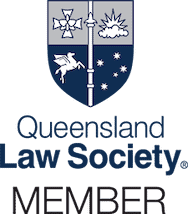As of 1 July 2016, Queensland has a no-fault scheme for treatment, care and support for eligible persons who suffer serious personal injury caused by, through or in connection with the:
- driving;
- collision, or action to avoid a collision;
- running out of control; or
- defect causing loss of control,
of a prescribed vehicle, within Queensland.
The National Injury Insurance (Qld) Act 2016 (Qld) (NIISQA) was introduced to meet Queensland’s obligation to address the agreed federal benchmarks for the provision of treatment, care and support to persons involved in road accidents who suffer serious personal injury. The NIISQA does not affect the common law rights of Claimants for at-fault compulsory third party claims. However, the meaning of the term ‘insurer’ under the NIISQA will see the legislation operate differently in claims against interstate compulsory third party (CTP) insurers (Interstate Insurers), compared with claims against Queensland licensed insurers.
The NIISQA will be administered by the National Injury Insurance Agency, Queensland (Agency).
Meaning of ‘insurer’ for the purposes of the NIIS
The dictionary in the NIISQA defines certain words used in the Act.
The word ‘insurer’ is a word that is defined. Under the NIISQA:
‘insurer means an insurer under the statutory insurance scheme under the [Motor Accident Insurance Act 1994 (Qld)].’
The Motor Accident Insurance Act 1994 (Qld) (MAIA) defines the statutory insurance scheme as, ‘the insurance scheme established by [the] Act’: section 4.
Several sections in the MAIA refer to the ‘statutory insurance scheme’. Those sections concern such matters as:
- the obligations of licensed insurers;
- the statutory insurance scheme levy;
- the industry deed;
- the functions of the Motor Accident Insurance Commission; and
- premium rates,
and other matters that are of no consequence to Interstate Insurers.
Interstate Insurers are not, ‘insurers under the statutory scheme under the [MAIA]’. The Transport Accident Commission (Vic) is the insurer under the statutory scheme under the Transport Accident Act 1986 (Vic). The Territory Insurance Office (NT) administers the Motor Accidents Compensation (MAC) Scheme under the Motor Accidents (Compensation) Act 1979 (NT). The Motor Accident Insurance Board (Tas) administers the funding and payment under Tasmania’s scheme.
While claims for damages against these Interstate Insurers are regulated by the pre-court procedures of the MAIA, those Interstate Insurers are ‘insurers’ under their own schemes; with their own statutory policies of insurance.
When an Interstate Insurer is an ‘insurer’ under the NIISQA
Under section 32AA of the Acts Interpretation Act 1954 (Qld) (AIA) a definition in an Act applies to an entire Act. However, under section 32A of the AIA, a definition in an Act applies except so far as the context or subject matter otherwise indicates or requires.
So, if the context or subject matter of a particular section or part of the Act requires; the term ‘insurer’ could be interpreted to mean Interstate Insurers.
Section 102 is an example of a provision which requires that the word ‘insurer’ be a reference to Interstate Insurers. Under section 102, the Agency may recover, as a debt, the present day value of a participant’s future treatment, care and support from the ‘insurer’ under an interstate CTP policy of a vehicle at-fault.
A comparison between sections 42 and sections 102 of the Act, shows that the word ‘insurer’ has taken on two meanings within the Act. Section 42 provides that the Agency may be liable to contribute to the liability of an ‘insurer’. It could not have been Parliament’s intention for the Agency to be obliged, on the one hand, to contribute to the liability of an Interstate Insurer and, on the other, entitled to seek recovery from them.
Claims involving Interstate Insurers
Apart from under section 102, the word ‘insurer’ under the NIISQA does not appear to extend to Interstate Insurers. This does not detract from the obligation of the Agency to pay for the treatment, care and support of participants under the NIISQA.
With the word ‘insurer’ under the NIISQA limited to licensed insurers, the Agency has no obligation to contribute towards the liability of Interstate Insurers, against which common law claims are made. Accordingly, Claimants may pursue those Interstate Insurers for the total of their damages (apart from amounts already paid by the Agency) in the usual way. However, the Agency is authorised to pursue Interstate Insurers for recovery of the present day value of any future treatment, care and support required by the Claimant.
Interstate Insurers will need to consider their liability for common law damages in Queensland claims and statutory entitlements (including those under their own schemes) in the context of the NIISQA, the MAIA and any local legislation or policy applying to the vehicles registered interstate which they insure. Lawyers for Claimants will need to provide different advice to their clients as to the process under the Act, depending on the identity of the Insurer.





